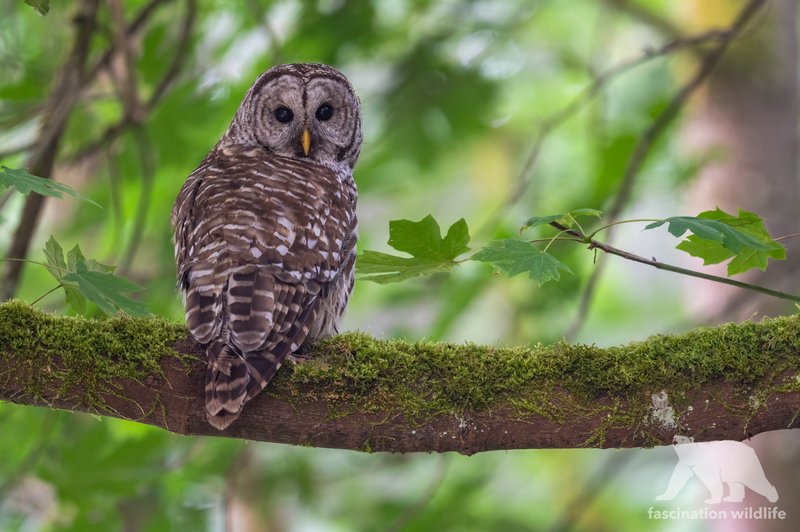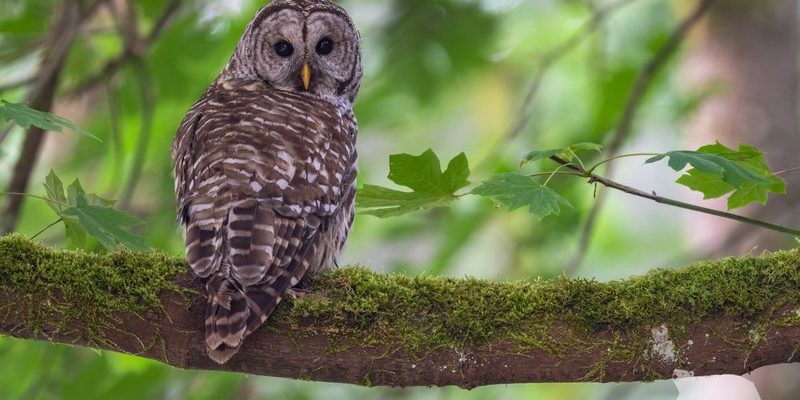
The good news is that the Barred Owl isn’t currently listed as endangered. However, its status is complex and worth examining, especially as environmental changes and human influences come into play. So, let’s dig deeper into the world of the Barred Owl and understand its population status, habitat needs, and what conservation efforts are underway to ensure these beautiful creatures continue to thrive.
The Barred Owl: An Overview
Barred Owls are medium-sized birds known for their striking brown and white plumage, with a distinctive pattern of bars across their chest. Imagine a fluffy, feathered bowling pin—that’s pretty much their shape! They’re found predominantly in mature forests across North America, particularly in the eastern and Pacific Northwest regions.
One of the most iconic traits of the Barred Owl is its call, which sounds a bit like “who cooks for you? Who cooks for you all?” It’s a sound that many nature enthusiasts cherish, often associating it with peaceful nights in the woods. But this beloved species is also at a crossroads in its current environment. While Barred Owls are not endangered, their future hinges on multiple factors that can affect their populations.
Population Status: Not Endangered, But At Risk
Currently, Barred Owls are classified as a species of least concern by the International Union for Conservation of Nature (IUCN). This means they aren’t at immediate risk of extinction. However, that doesn’t mean they’re out of the woods entirely. Their populations have actually expanded significantly over the past century—once limited to the eastern U.S., they’ve been moving westward.
You might find this surprising, but this shift can pose challenges. As they invade the habitats of other owl species, like the Spotted Owl, Barred Owls are often seen as a threat. They compete for the same food sources and nesting sites, which can lead to declines in native populations. Honestly, it’s a complicated web of interactions in the wild that we need to pay attention to.
Habitat Needs of the Barred Owl
To understand the Barred Owl’s conservation needs, we must first look at its habitat. These owls prefer mature forests with large trees for nesting and plenty of underbrush for hunting. Think of it as a cozy apartment in a tree—an ideal space with room to roam but also perfect for snuggling in.
Unfortunately, habitat loss due to logging, urban development, and climate change poses a significant risk. When large tracts of forest are cut down, the Barred Owl loses its home. They thrive in environments that offer diverse prey options, such as small mammals, birds, and even amphibians. If their habitat diminishes, so does their food supply, which can lead to population declines.
Human Impact on Barred Owls
Our actions significantly influence Barred Owls, often without us even realizing it. Everything from deforestation to climate change has ramifications on their ecosystem. For instance, as temperatures rise, prey species may migrate, leaving the Barred Owl scrambling for food.
Additionally, the introduction of new species—whether it’s through habitat interference or other means—can disrupt the balance that Barred Owls depend on. Think of it like moving into a shared apartment with unpredictable roommates; chaos can ensue when everyone is vying for the same resources!
Conservation Efforts for the Barred Owl
While Barred Owls aren’t endangered right now, that doesn’t mean we can sit back and relax. Numerous conservation efforts aim to protect their habitats and manage their populations effectively. Organizations and wildlife agencies monitor populations, focusing on habitat preservation and restoration projects.
One method includes preserving old-growth forests, which provide ideal nesting sites. By maintaining these valuable ecosystems, we give Barred Owls a fighting chance. Public education is also crucial; the more we’re aware of their needs, the better we can advocate for their future.
The Future of Barred Owls: What’s Next?
So, what’s the outlook for Barred Owls? While they’re not endangered now, constant vigilance is essential. Climate change, habitat loss, and competition with other species can all impact their survival. It’s crucial that we continue to support conservation efforts and protect their habitats.
You might think it’s just a bird, but the Barred Owl plays an important role in our ecosystems. By ensuring they thrive, we help maintain the balance of nature. Every small action counts—whether it’s supporting local conservation organizations or spreading awareness about these amazing creatures.
Understanding whether the Barred Owl is threatened or endangered goes beyond just birdwatching. It connects us to the larger conversation about wildlife conservation and habitat protection. As we become more aware of the challenges they face, we can make informed decisions to support their survival.
Every time you hear that haunting call in the woods, remember—there’s a lot more at stake than just a lovely sound. It’s about the balance of nature and our responsibility to act as stewards of the environment. As long as we keep an eye on the Barred Owl and help create a healthy habitat, we can ensure that future generations will also enjoy their magnificence.

